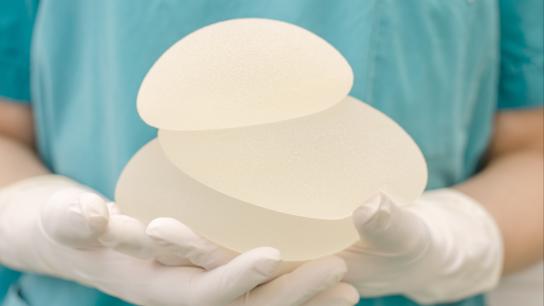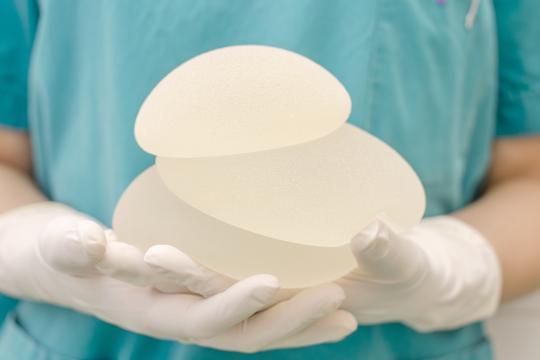
Breast implants are one of those things some people (raises hand!) spend their entire lives fantasizing about. It seems strange then, to know, that very often people are visiting their doctor for implant REMOVAL. Why would anyone ever give these luscious pillows of cleavage up?!
It turns out people remove breast implants for many reasons, some of which have little or nothing to do with the actual implant. According the latest statistics from the American Society for Aesthetic Plastic Surgery (ASAPS), 38,071 breast implant removal procedures were performed last year.
“Very rarely is there a defect in the implant itself,” says Dr. Peter Neumann, Chief Plastic Surgeon, Nassau Plastic Surgical Associates - Roslyn, NY. Patients usually want to be larger or more natural which, can be achieved with silicone implants especially "Gummy Bear" or cohesive gel implants. “Board-certified plastic surgeons know the newest and ideal implants to meet your aesthetic goals. Make sure your physician has experience with these implants. They can be inserted via the lower fold of the breast, or around the nipple-areola, or through the armpit (endoscopic assisted),” explains Dr. Neumann.
The objective is to get a soft and natural fuller breast with a safe, long lasting result. The newer implants are guaranteed by the company not to fail during your lifetime. “Beware of possible complications such as bleeding, infection, firmness and inability to breastfeed. When the surgery is properly performed, these risks are minimal. Most women can safely breastfeed, have normal mammograms and easily perform self-exams,” says Dr. Neumann. When you go to an experienced plastic surgeon the risks are greatly minimized. This makes sense. Why would anyone let a doctor who is not experienced cut into their body?
That said, there are many reasons to remove or exchange breast implants.
Obviously, some women simply want an upgrade in size. “More often though, as women age, their breasts become droopier. This is especially true in women with large implants whose implant weight may contribute to sagging,” explains Dr. Ulysses H. Scarpidis, a board-certified plastic surgeon with Scarpidis Aesthetics New York Plastic Surgery in New York City.
During a breast lift, women oftentimes choose to exchange their breast implants for either the same size or a larger pair. In fact, increasing the size of the implants may provide a small but adequate lift to the breasts, sometimes evading the need for an additional breast lift. “With the advent of newer silicone and gummy bear implants, some women want to exchange their current implants for a newer, safer, alternative. Typically, implant manufacturers guarantee their implants for 10 years. This does not mean that in 10 years the implant fails, but rather that if within 10 years there is an issue with the implant, the manufacturer will provide a new implant for free,” explains Dr. Scarpidis. It is important to note that this may not cover the purchase of the other breast’s implant, or the surgeon’s, hospitals’, or anesthesiologist’s fees.
Breast implants typically fail because of mechanical or traumatic stress (i.e. friction caused by an implant rubbing against itself or a traumatic fall or a car accident that puts excessive pressure directly on the implant). “Interestingly, sometimes, although we may exchange the implants, the chief reason for the surgery has nothing to do with the implant,” notes Dr. Scarpidis.
Our bodies’ natural healing process creates a shell or capsule to surround breast implants. “Several factors may cause this shell to become thick, visible, firm to touch, and even painful, a condition called capsular contracture. Surgery to remove this shell and alleviate these symptoms necessitates removal of the implant as well. In these cases, patients sometimes opt for smaller implants to replace their current ones, thus decreasing their risk of capsular contracture recurrence,” explains Dr. Scarpidis.
Choosing implant type, size, location, and future replacement requires a complex decision-making process that consolidates the patient’s wishes with the doctor’s recommendations based on best practices. “It is imperative that patients seek out board-certified plastic surgeons, trained in the latest and safest techniques in breast surgery to achieve the desired results, while minimizing risks and complications,” says Dr. Scarpidis.
So, the reason behind breast implant removals is part a grass–is-greener scenario, part a necessary maintenance.



